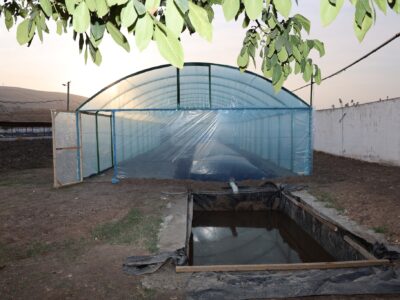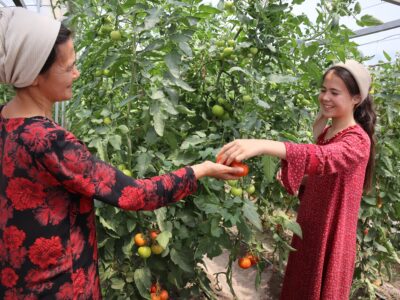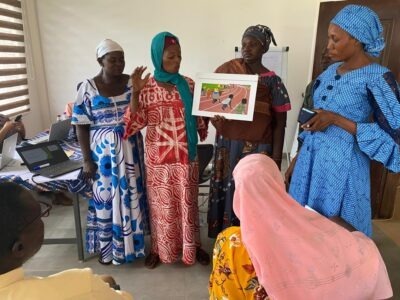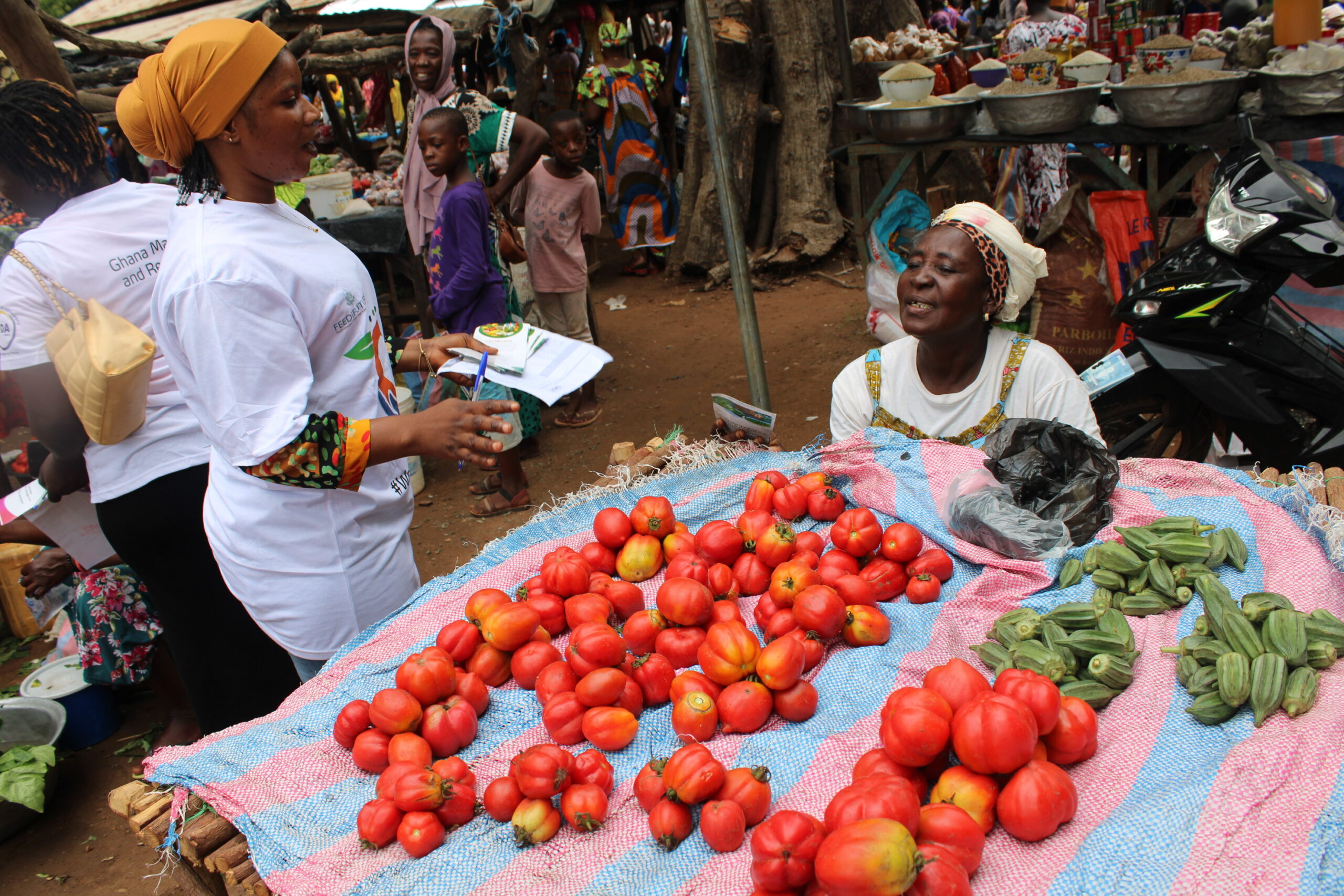
According to the World Health Organization, more than 600 million people fall ill globally every year, and 420,000 die from eating contaminated food, with the African region contributing the highest number of cases and deaths.
In Ghana, foodborne diseases such as cholera, typhoid fever, dysentery, and viral hepatitis pose a significant health burden for health authorities and the health system. These diseases may arise from exposure to contaminated food, unsafe water, and chemicals, heightened by poor hygiene and lower literacy and education levels.
Food safety is a crucial concern impacting public health. Recognizing that healthier markets would have an impact on healthier lives, USAID’s Feed the Future Ghana Market Systems and Resilience (MSR) Activity, in collaboration with the Ghanaian Food and Drugs Authority (FDA), launched a comprehensive food safety awareness campaign in the Upper West Region. The campaign, conducted in two districts—Sissala East and Nawdoli-Kaleo—focused on educating market women, consumers, and buyers about the dangers of aflatoxins, misuse of agrochemicals, and residue contamination in grains and legumes. This initiative represents a significant step toward fostering safer food handling practices and protecting community health.
Objectives of the Campaign
The primary objective of the campaign was to raise awareness about food safety issues among market actors and the general public, particularly the dangers associated with contaminated foods. Aflatoxins, toxic compounds produced by certain fungi in food, can pose serious health risks, including liver cancer. Likewise, the misuse of agrochemicals and residue contamination in food products can lead to harmful health effects for consumers. Educating key market figures, such as Market Queens[1], and encouraging them to adopt safer food handling practices was central to the campaign’s strategy.
The campaign aimed to drive behavioral change by leveraging the influence of respected market figures like market queens. Market queens, known for their authority and leadership, were pivotal in promoting safe food practices and ensuring the message reached a wider audience. Additionally, the campaign expanded its outreach through mass media, using radio programs to broadcast essential food safety messages to a broader audience within the MSR Zone of Influence (ZOI)[2] and surrounding districts.
1. Direct Engagement with Market Queens and Market Actors
A central feature of the campaign was the direct engagement with Market Queens through organized market durbars. The market durbar is a platform for communities to discuss and implement developmental projects. At the durbar, representatives of FDA educated these market leaders on the importance of adhering to food safety practices and the potential dangers of contaminated food products. The discussions underscored how unsafe food handling could erode consumer confidence and affect market reliability. By targeting Market Queens—key influencers within their communities—the campaign aimed to generate a ripple effect, ensuring these best practices spread throughout the markets.
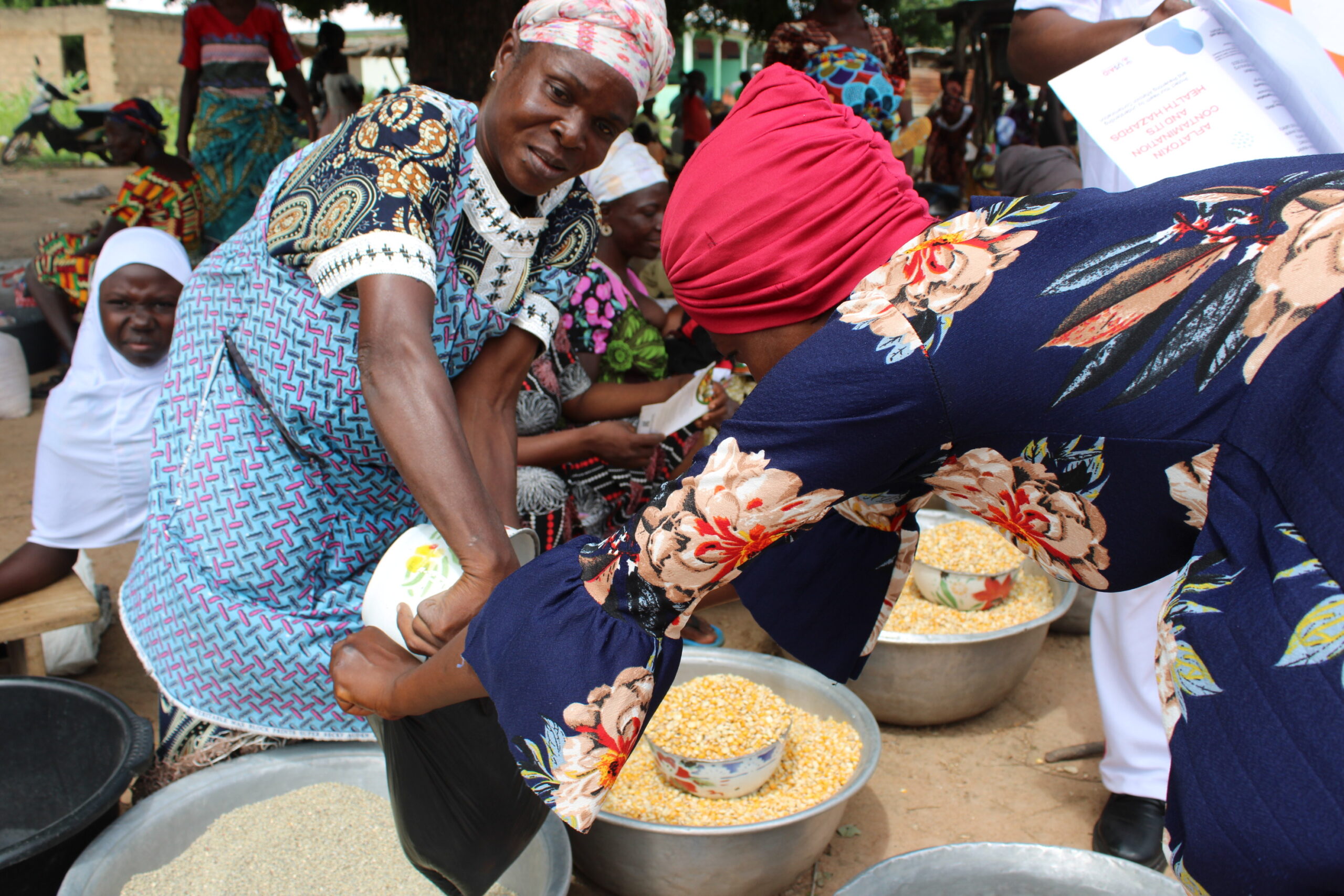
2. Market Storms and Brochure Distribution
Youth volunteers from various communities played a significant role in the campaign by participating in “market storms.”[3] For many of the volunteers, it was an especially useful experience as they were exposed to new ideas and given an opportunity to practice public presentation skills. Beatrice Bayor, one of the volunteers, said, “This is the first time I am learning about aflatoxins and their impact on food.” Armed with knowledge and equipped with educational brochures, these volunteers actively engaged with consumers, sellers, and buyers to raise awareness about food safety. They distributed 1,048 copies of food safety brochures—524 copies per district—across the two district markets, reaching a total of 419 participants, including 306 women and 113 men. These efforts ensured that vital information on preventing contamination and adopting safe food handling practices reached as many people as possible.
3. Radio Programs for Wider Outreach
The campaign also featured a one-hour radio discussion program in the three districts of the two regions. Key resource persons from the FDA and the Department of Agriculture participated in these sessions, sharing essential food safety information with a broader audience. The radio programs were strategically aired to maximize reach, extending the campaign’s impact beyond the immediate market areas to the peripheral communities within the ZOI. It is estimated that around 60,000 people listened to these discussions and live location broadcasts across the three districts of the two regions.
One of the most encouraging outcomes of the campaign was the commitment shown by Market Queens in both districts to adopt and promote best food safety practices. Their active participation in both the market durbars and radio discussions highlighted their dedication to educating fellow market women on proper food handling. This commitment was reinforced during the campaign, with Market Queens pledging to take actionable measures to ensure the safety of products sold in their markets. Their involvement laid a solid foundation for future food safety efforts, emphasizing the importance of local leadership in driving change.
Lessons Learned
The food safety campaign provided an opportunity to gain insight into ways to improve future campaigns.
- Observations showed that people listen to the radio routinely, providing a useful channel for mass communication and campaigns like food safety
- Using volunteers was extremely effective, as they used the local languages to explain the issues to the market actors
- Continuous engagement with the Market Queens will strengthen information dissemination
- Timing of the intervention was crucial as market dynamics vary from place to place. Some markets get busy towards the close of the day, while others are patronized around midday.
- The Information, Education, and Communication (IE&C) materials produced helped spread information on food safety. Some non-literate women even collected copies to give to their children to read.
Constraints Encountered
The campaign team encountered a few obstacles. The notable ones include:
- Varying market sizes made it difficult for the volunteers to reach all corners
- Many market vendors were focused solely on selling their products instead of listening to the campaign messages on food safety. Even among the Market Queens, many preferred to attend to their businesses rather than spend thirty minutes listening to Food Safety recommendations.
- For some vendors, investing in safer food handling or storage methods may be seen as an unnecessary expense
- A lack of coordination among market stakeholders (e.g., market authorities, vendors, consumers, and health departments) can limit the impact of food safety campaigns. The FDA and Environmental Protection Agency (EPA) occasionally operate in these areas, but always complain they do not have the resources to mount a more concerted effort.
Recommendations for Future Engagements
- The campaign could be spread over several days to involve schoolchildren to ensure sustainability and inculcate the need to cultivate safe food practices in children and youth
- The campaign could be done with the addition of a theatre group that would highlight the dangerous effects of chemicals and poor sanitary conditions in preparing farm produce for consumers
- The volunteers could use megaphones in the market to reach a wider audience or to complement the one-on-one engagements
- The airtime for the radio discussion could be increased to ensure there is enough feedback from the audience
- The time of the airing of the radio discussion should be fixed around the time when most of the farmers and market women are at home. This is likely to receive a large audience and engender discussions even at home.
- Additionally, subsequent campaigns should include the EPA who would add the implication of certain practices for the environment.
A Promising Future for Food Safety
The food safety campaign in the Upper West Region marks a significant advancement in improving food safety practices within these districts and their nearby communities.
Faustina Bayor, a 40-year-old agrochemical vendor, said, “We are happy that you have come to this market to talk about food safety. This is particularly important since food is life.“ Another participant said, “This is the first time I have heard about aflatoxins. This is useful knowledge that should be shared with many consumers.” Gladys Yembaare, a cereal dealer at the Nadowli market, said, “I did not know that using dirty water on the produce can affect consumers and have health implications.”
The success of this initiative demonstrates the effectiveness of combining direct engagement with influential market figures and leveraging mass media to spread critical food safety messages. The campaign’s impact is expected to continue growing, with plans to implement similar activities in some districts in the Northern Region in the coming weeks. As these efforts expand, the hope is that more market actors and consumers will adopt safer food handling practices, contributing to a healthier and more reliable food supply chain. By prioritizing food safety, the Food Safety campaign not only protects public health but also enhances market access, building a more robust and sustainable food system for all.
[1] Market queens are female leaders of commodity traders who rule the markets and represent other traders to the outside world.
[2] The Zone of Influence (ZOI) for Feed the Future intervention activities in Ghana is concentrated in the area above Latitude 8°N, encompassing 17 districts in the Northern, North East, Upper East, and Upper West Regions.
[3] Market storm involves organizations taking planned promotional, advertising, and sensitization activities in a market.
Learn more about the Feed the Future Ghana Market Systems and Resilience Activity.
Learn more about our work in Ghana.

